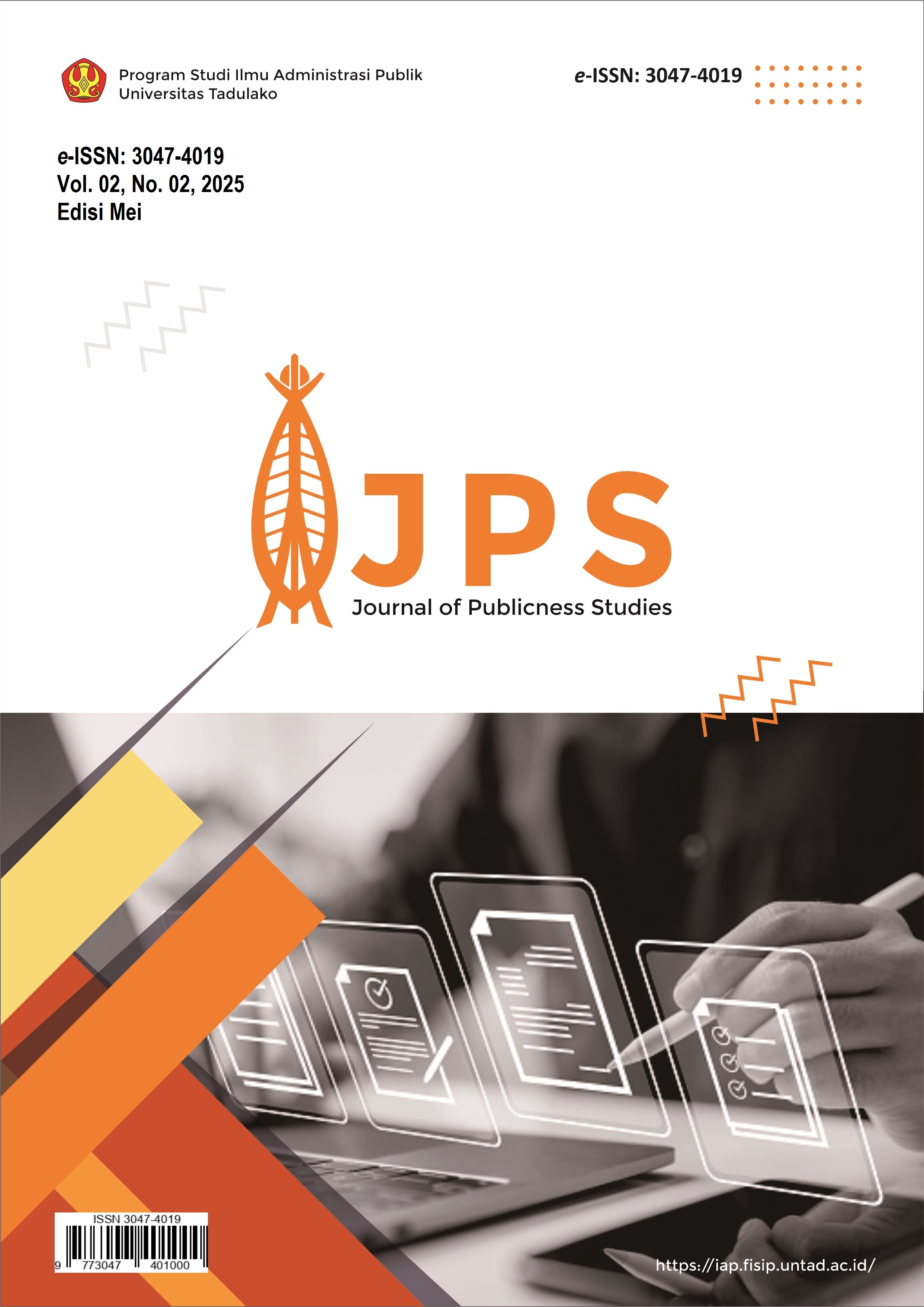Implementasi Kebijakan Pencegahan Dan Penanggulangan Hiv/Aids Di Kelurahan Talise Kecamatan Mantikulore Kota Palu
plugins.themes.academic_pro.article.main6954e48c350c2
Abstrak
Penelitian ini bertujuan untuk mengetahui bagimana Implementasi Kebijakan Pencegahan dan Penanggulangan HIV/AIDS di Kelurahan Talise Kecamatan Mantikulore Kota Palu. Dengan menggunakan model implementasi kebijakan George C. Edwards III yang mencakup aspek komunikasi, sumber daya, disposisi pelaksana, dan struktur birokrasi. Penelitian ini menggunakan metode kualitatif dengan pendekatan deskriptif. Data dikumpulkan melalui wawancara mendalam dengan pihak-pihak terkait, seperti Dinas Kesehatan Kota Palu,Kelurahan Talise Puskesmas Talise, Komisi Penanggulangan AIDS (KPA) Kota Palu, serta beberapa masyarakat yang terdampak. Selain itu, observasi lapangan dan studi dokumentasi juga dilakukan untuk memperkuat temuan penelitian. Hasil penelitian menunjukkan bahwa kebijakan pencegahan dan penanggulangan HIV/AIDS di Kelurahan Talise telah berjalan dengan cukup baik, terutama dalam hal koordinasi antar lembaga pemerintah dan penyedia layanan kesehatan. Namun, terdapat beberapa kendala yang masih dihadapi, seperti keterbatasan sumber daya, kurangnya tenaga medis yang terlatih khusus dalam penanganan HIV/AIDS, serta masih tingginya stigma masyarakat terhadap ODHA. Komunikasi antarinstansi cukup efektif, tetapi penyebaran informasi kepada masyarakat masih perlu ditingkatkan agar pemahaman mengenai HIV/AIDS lebih luas dan stigma dapat dikurangi.

